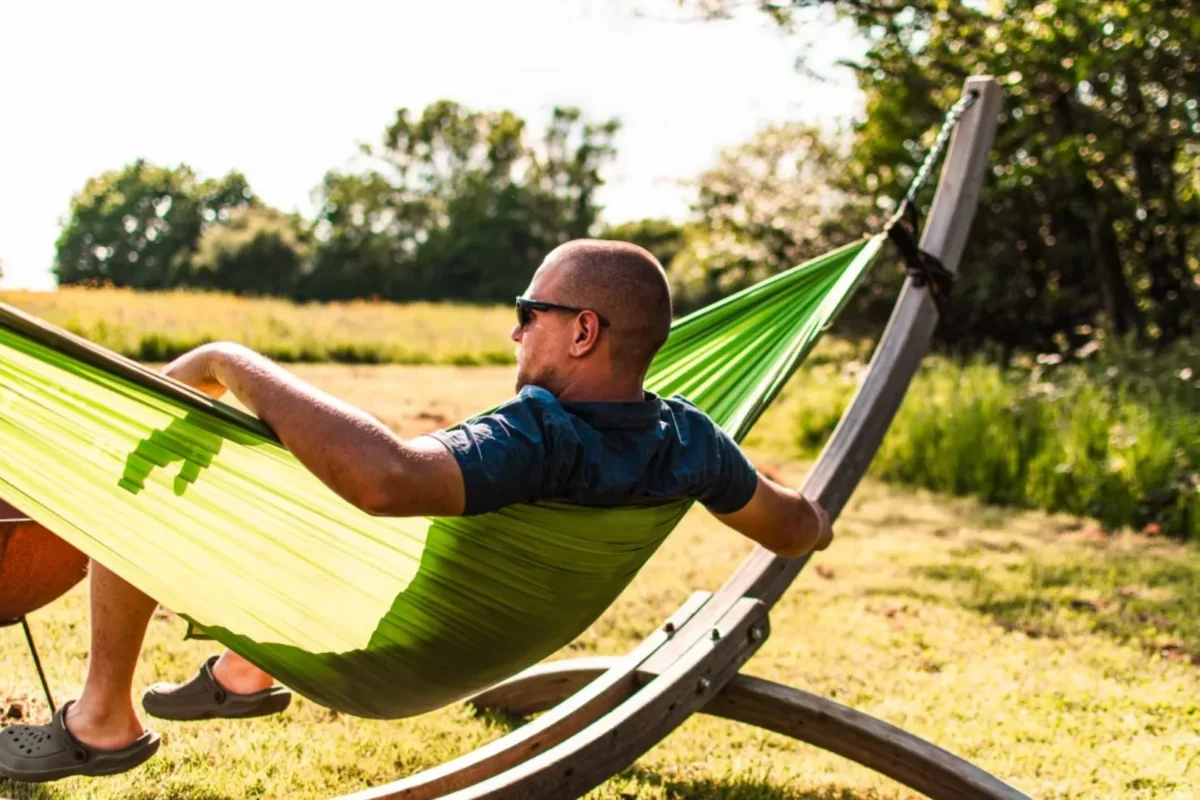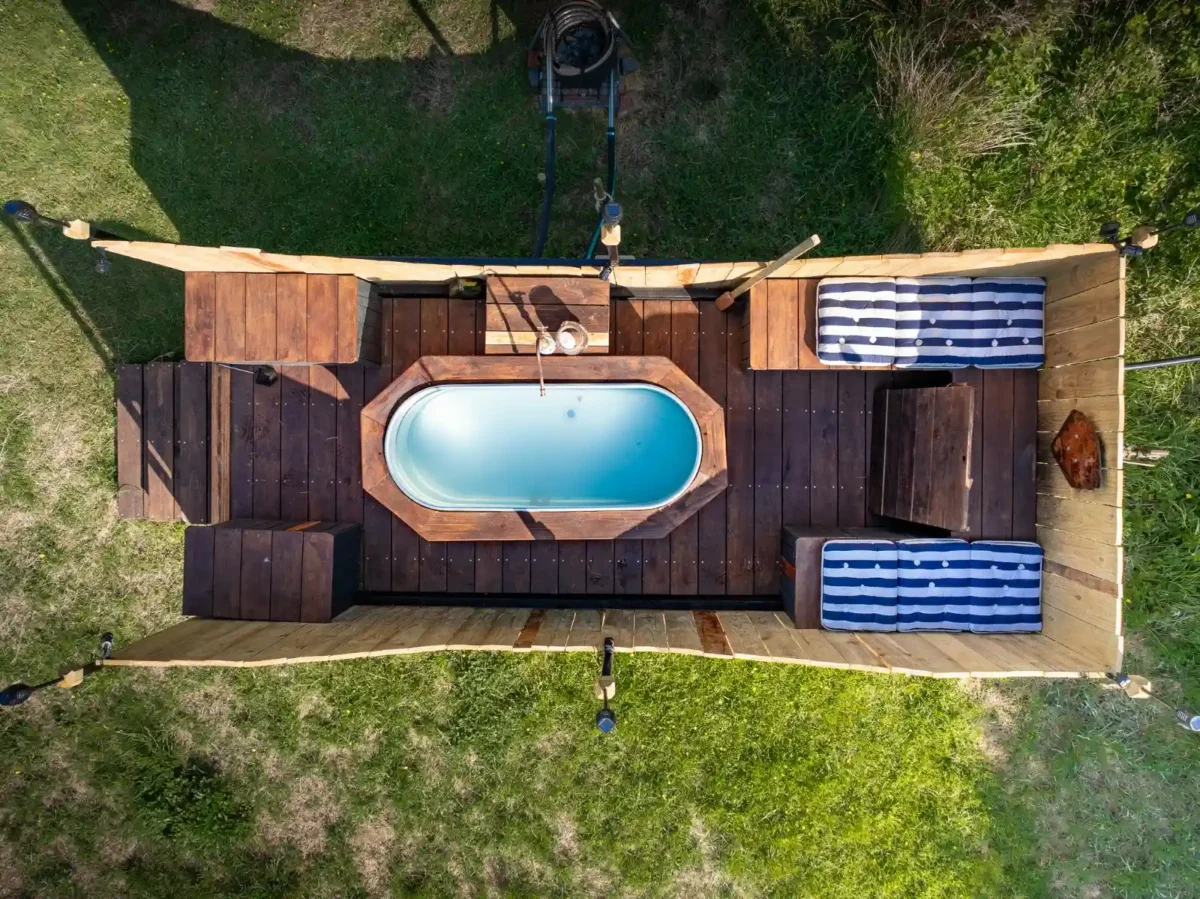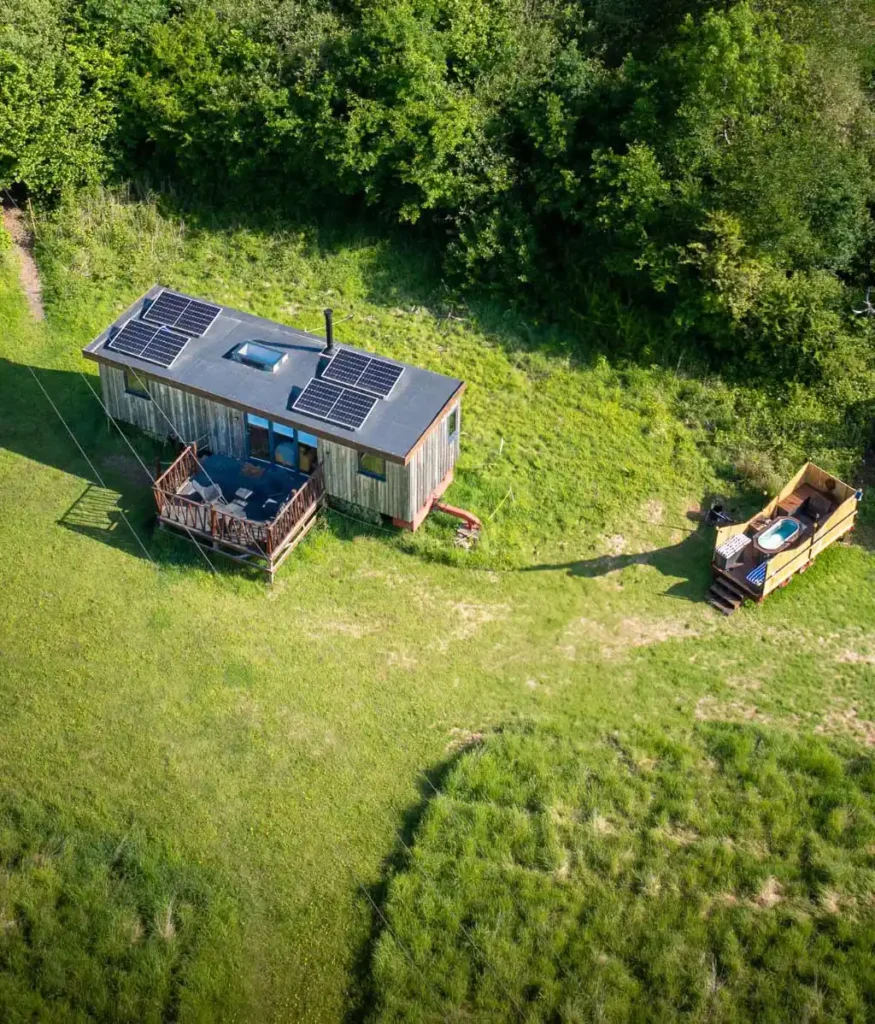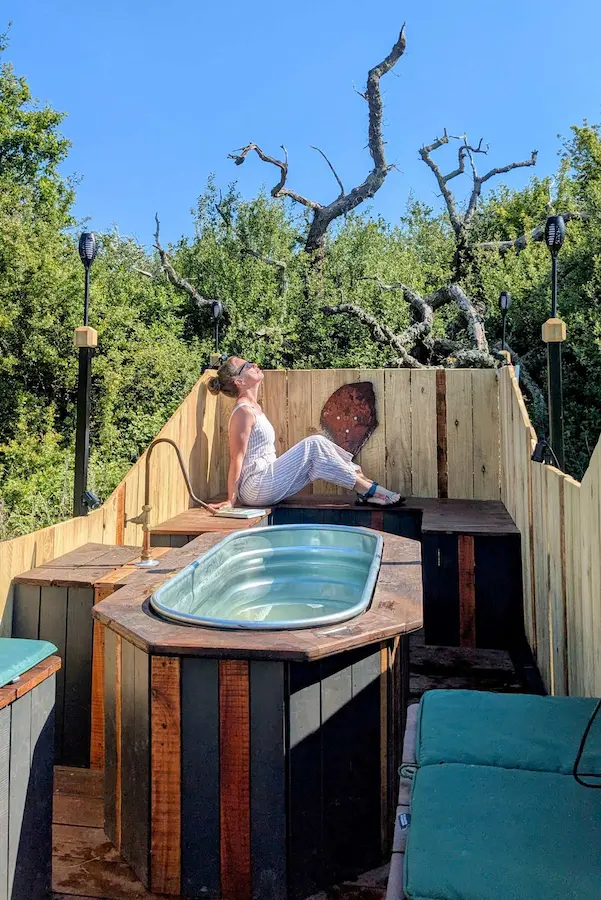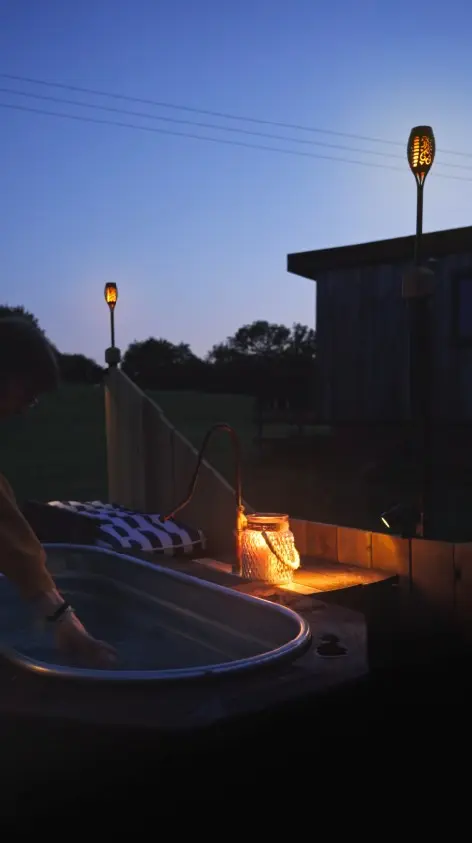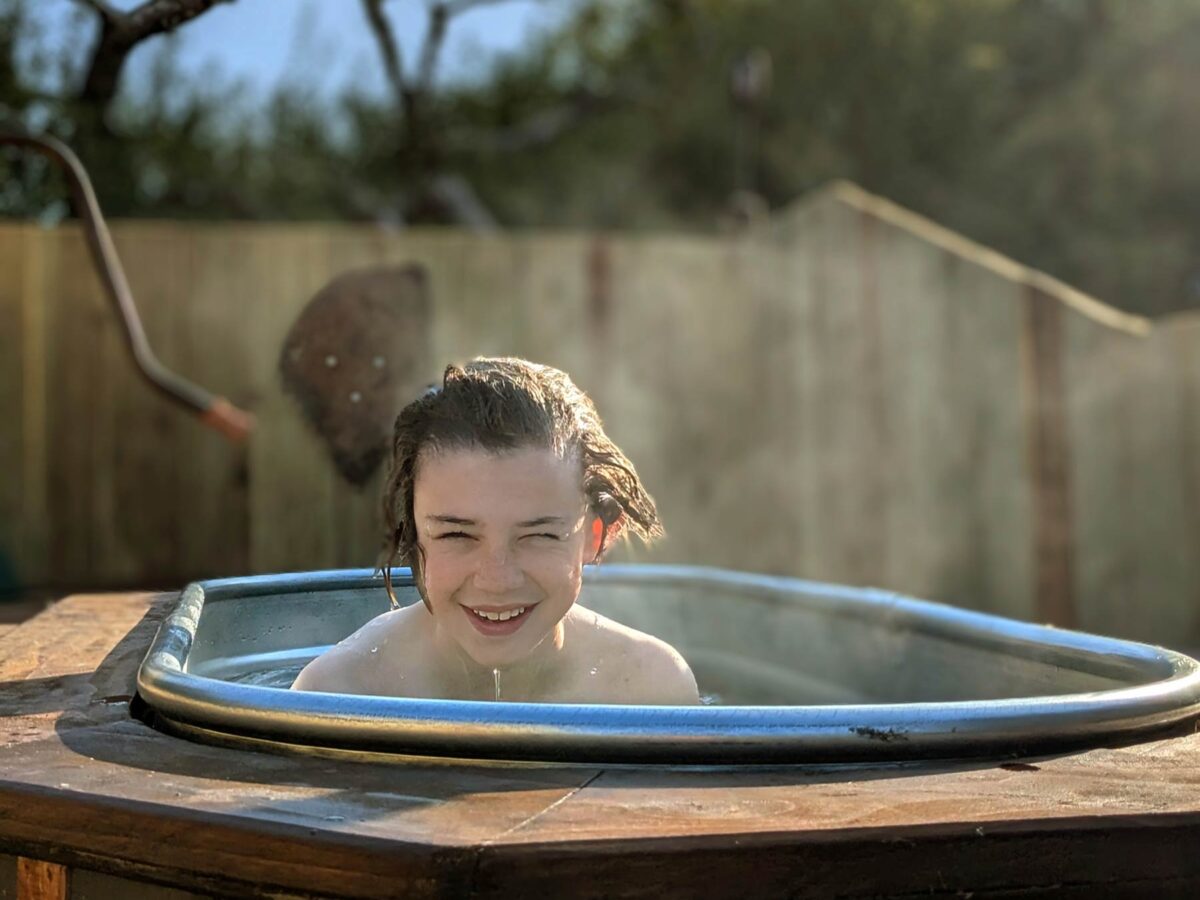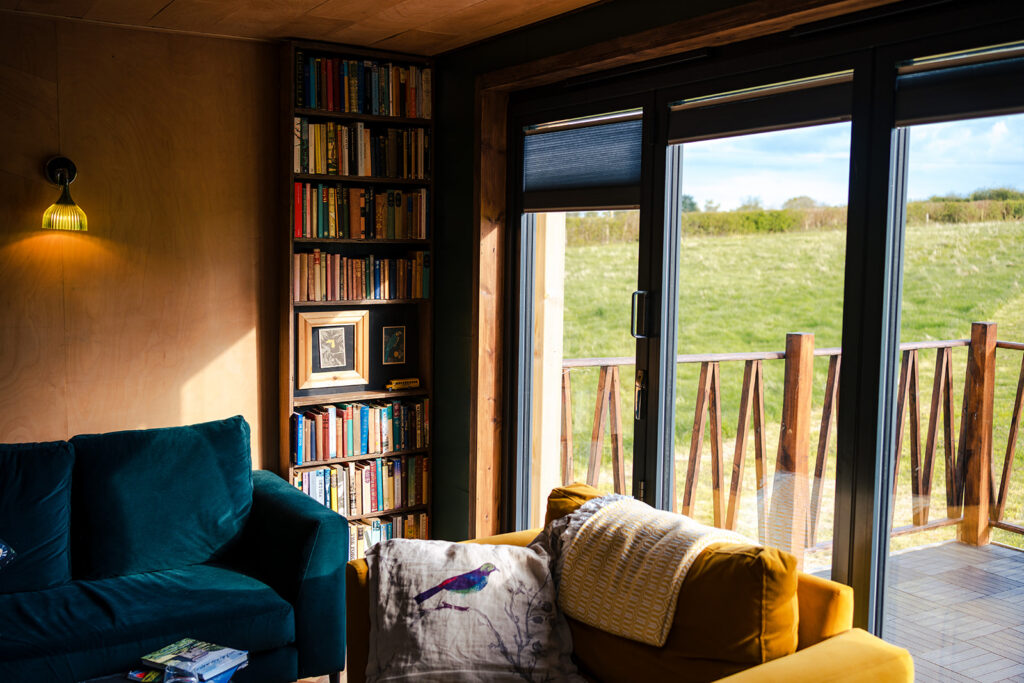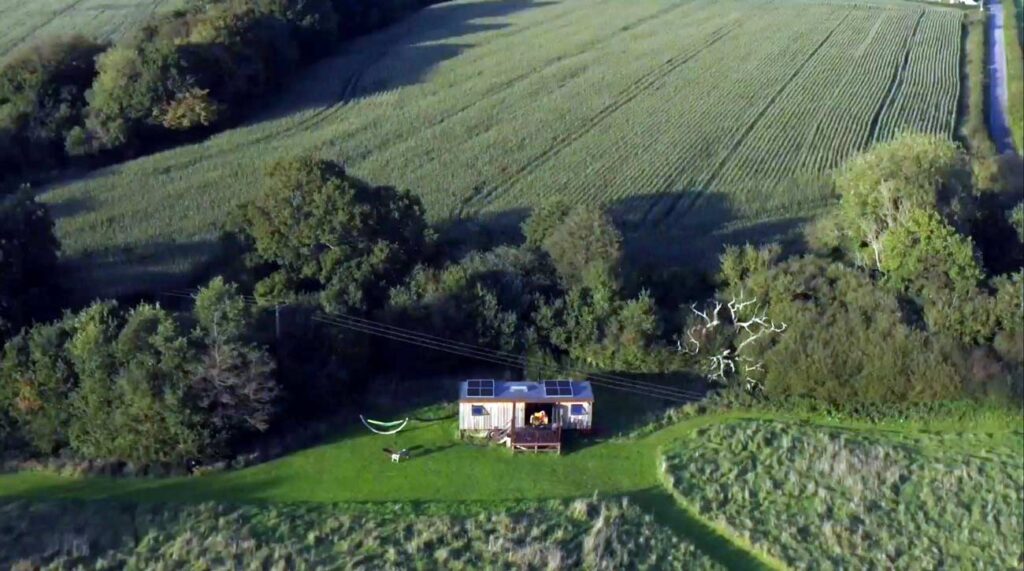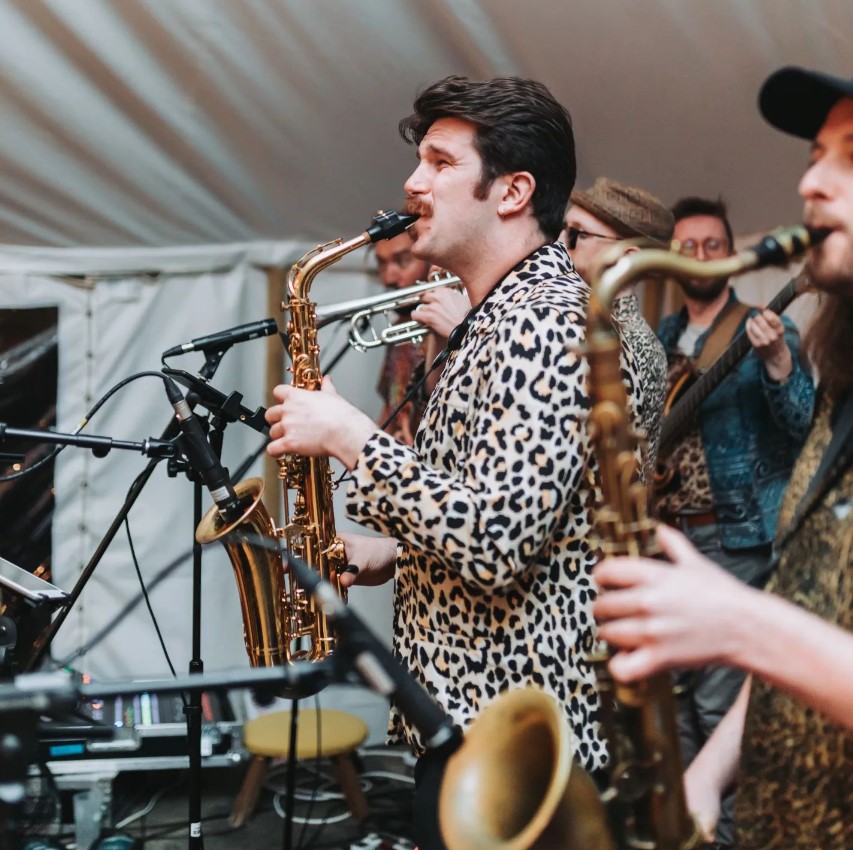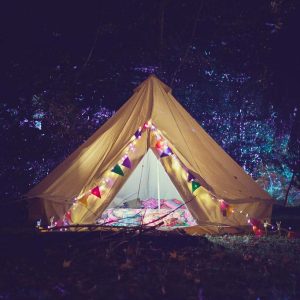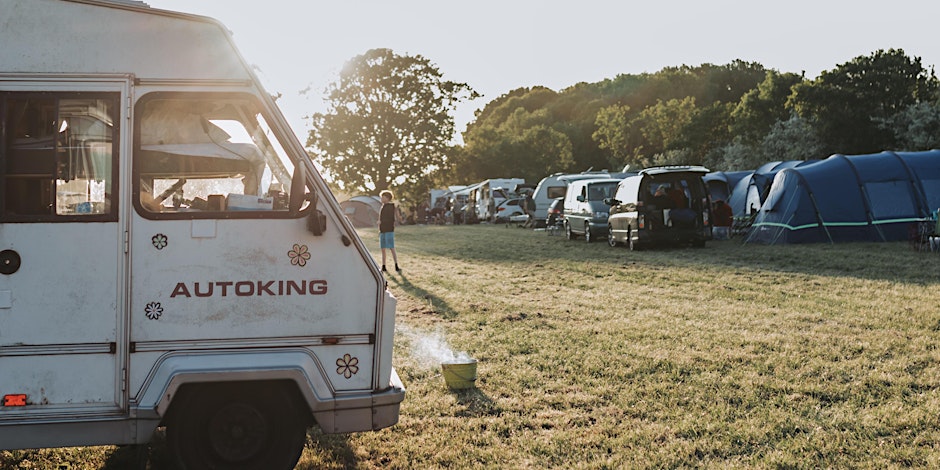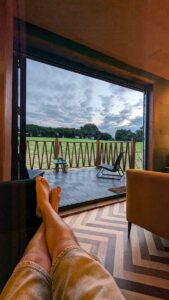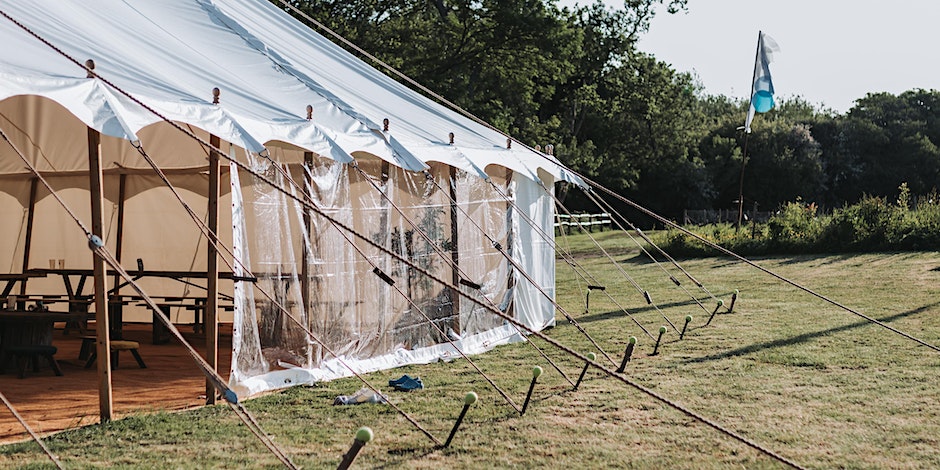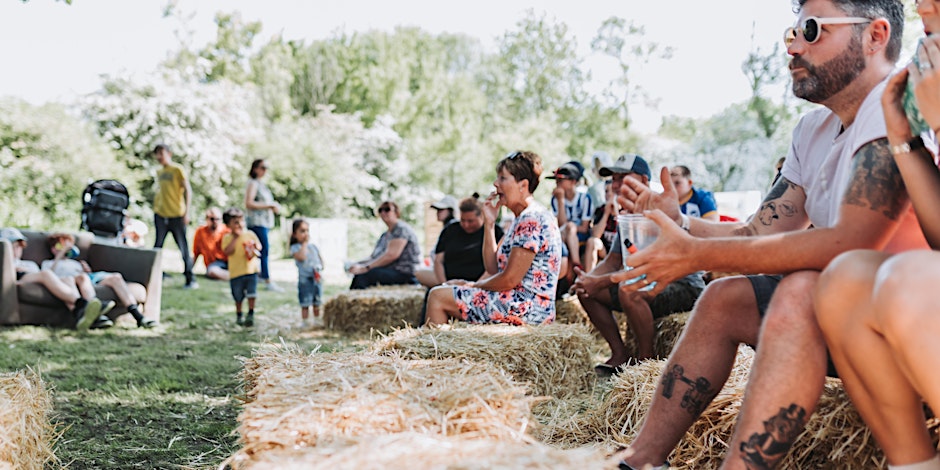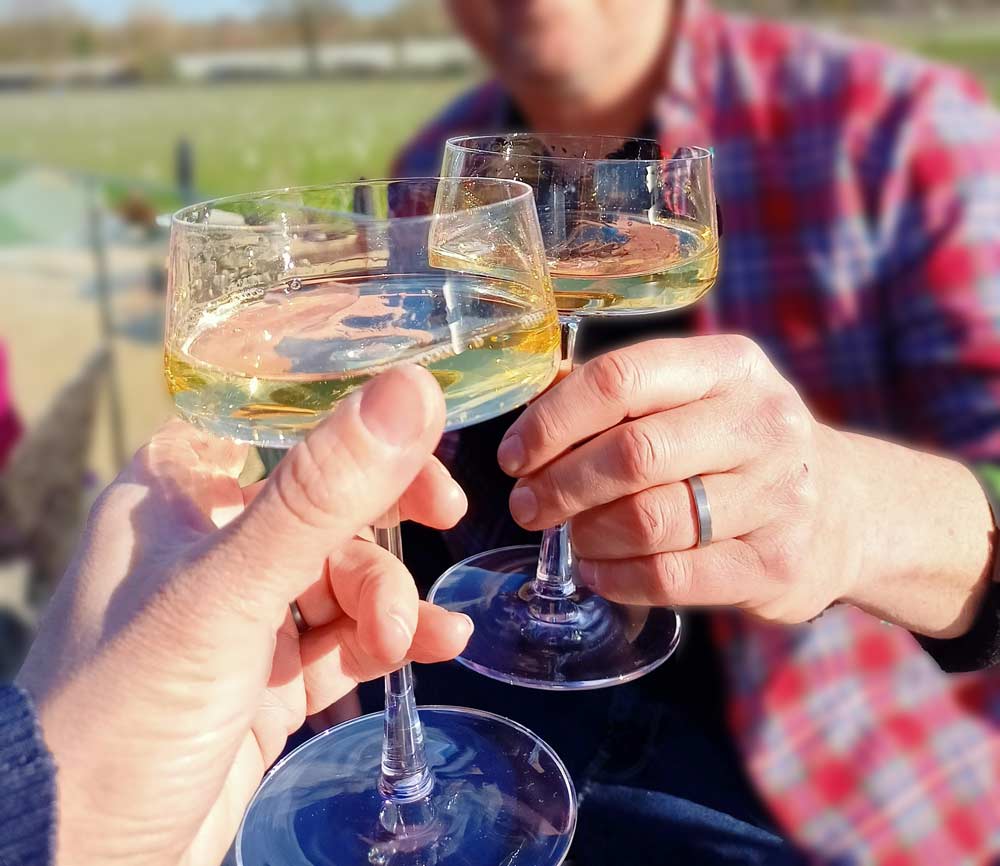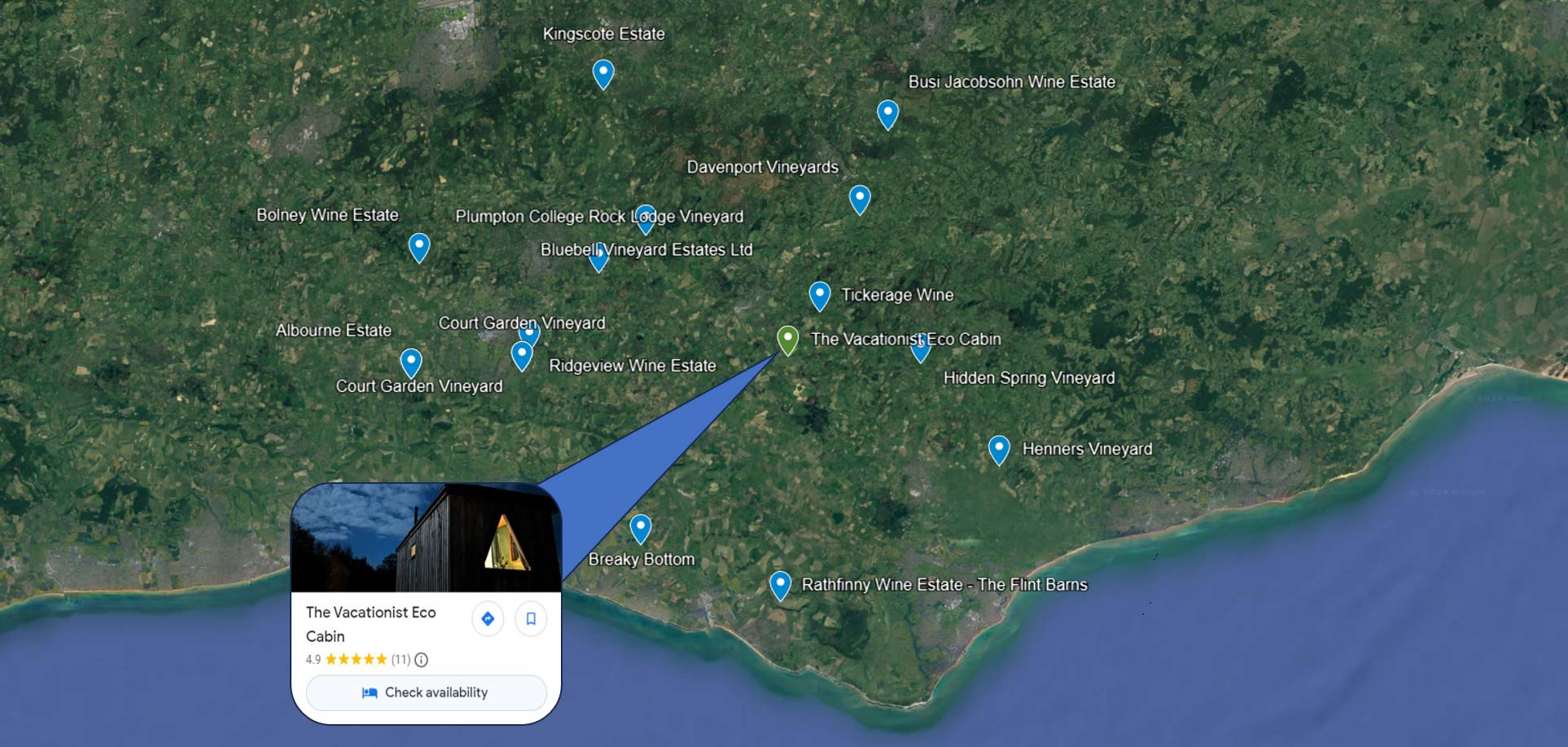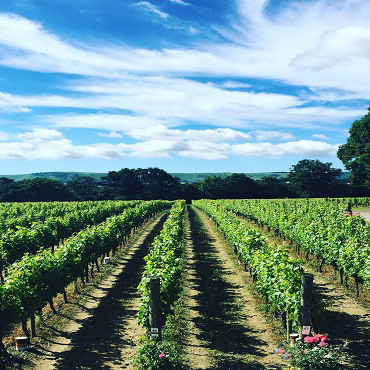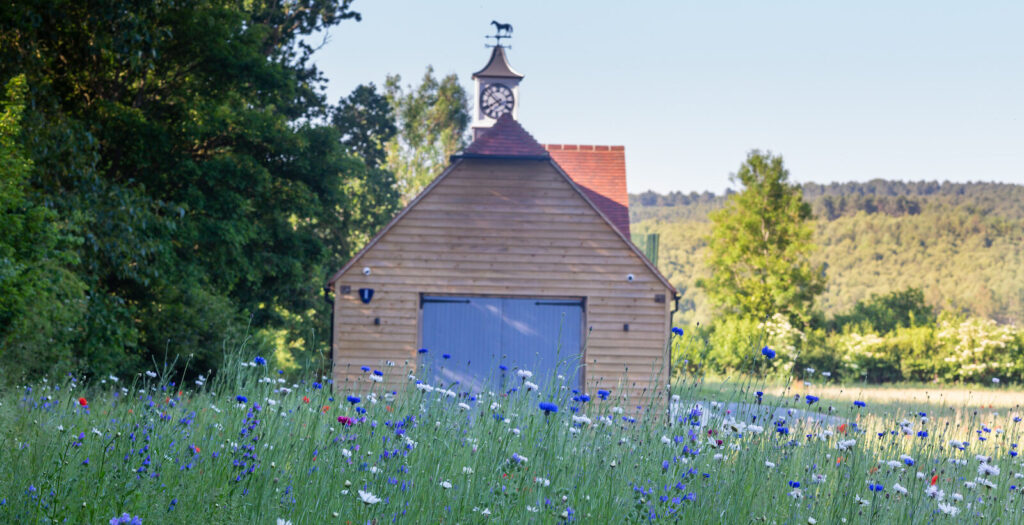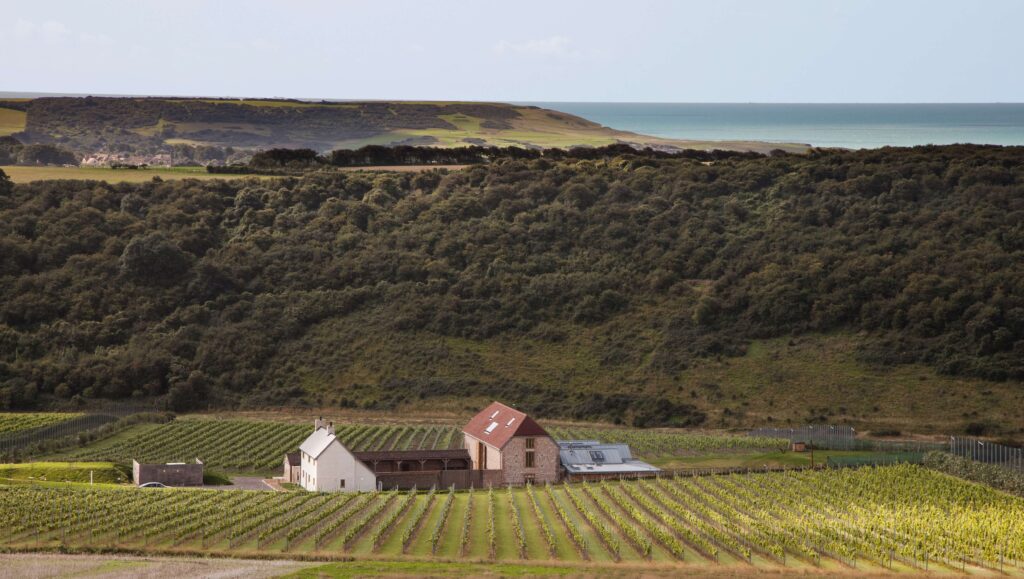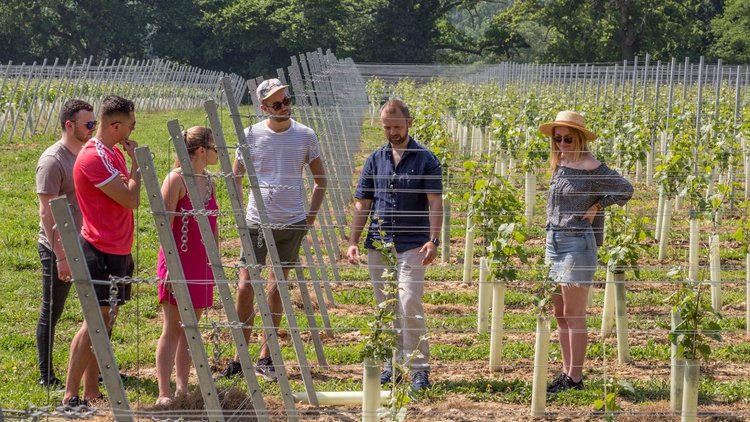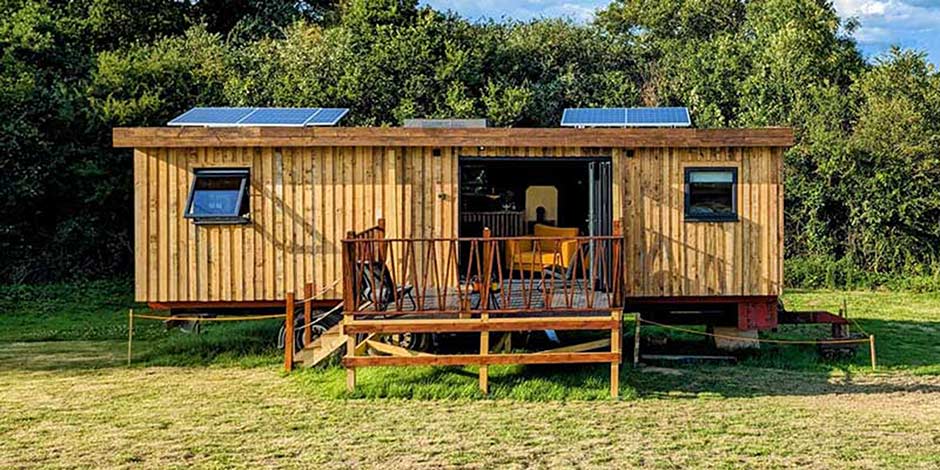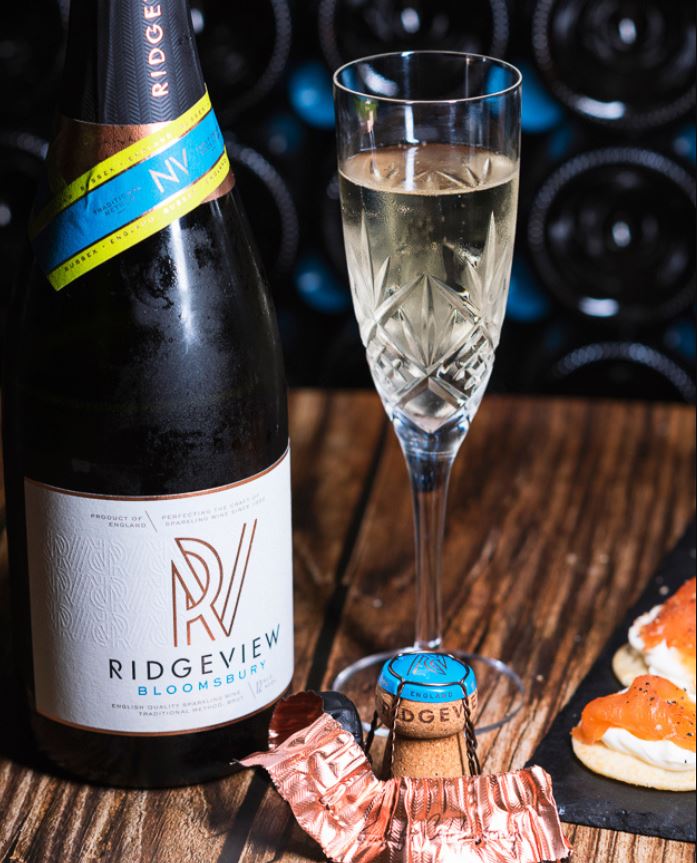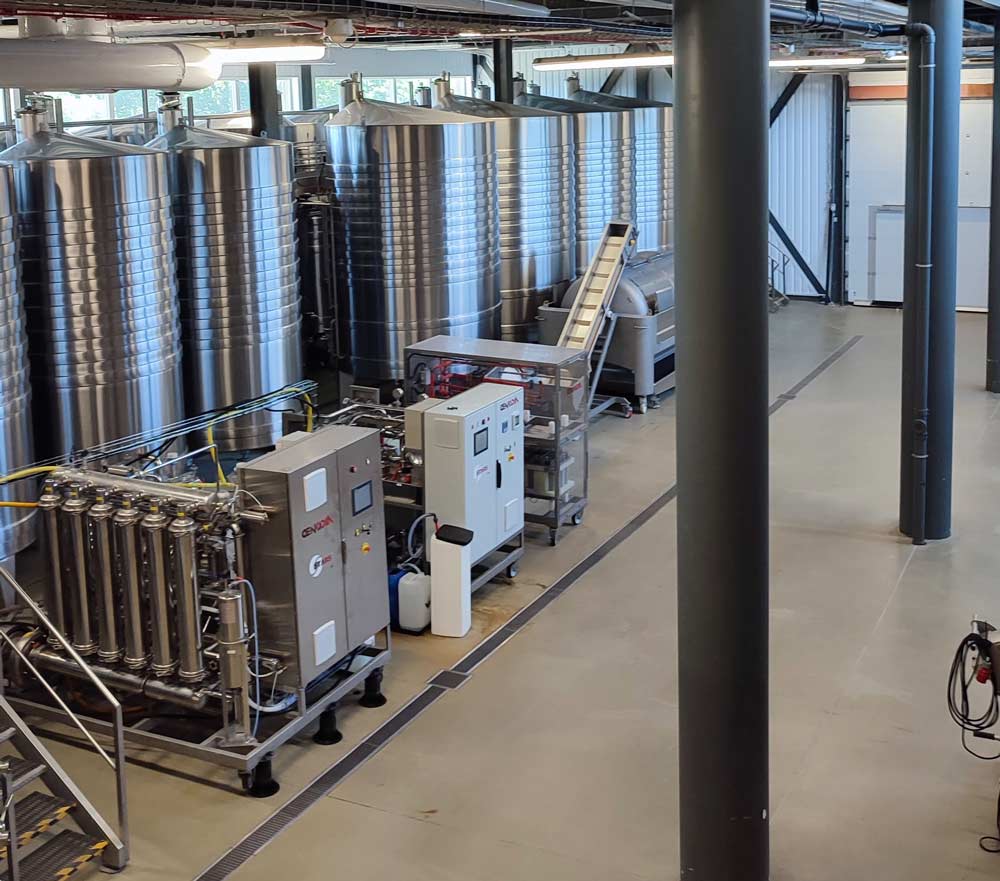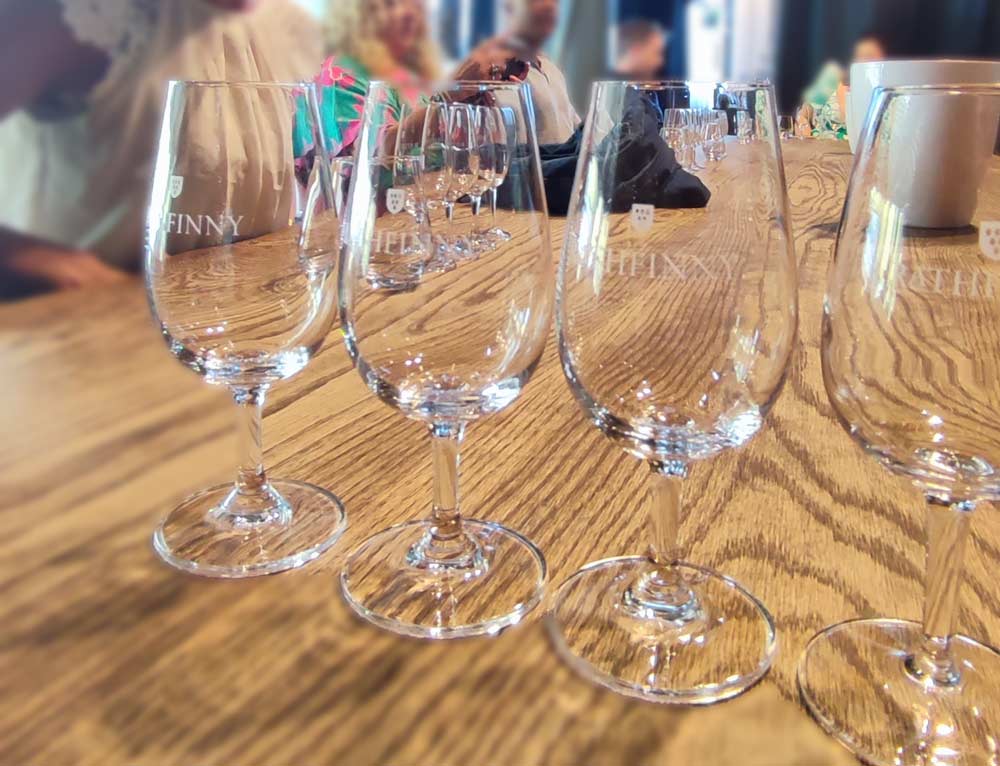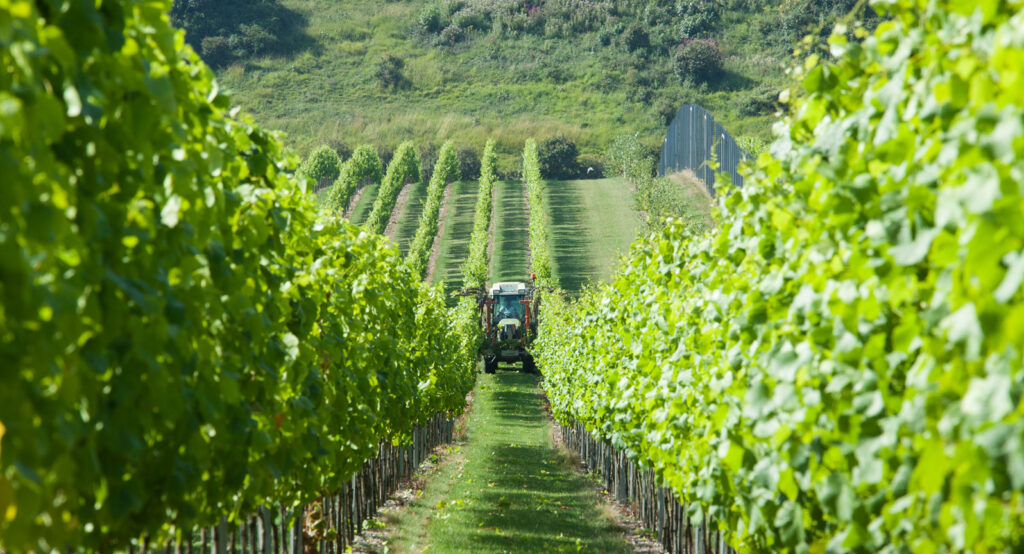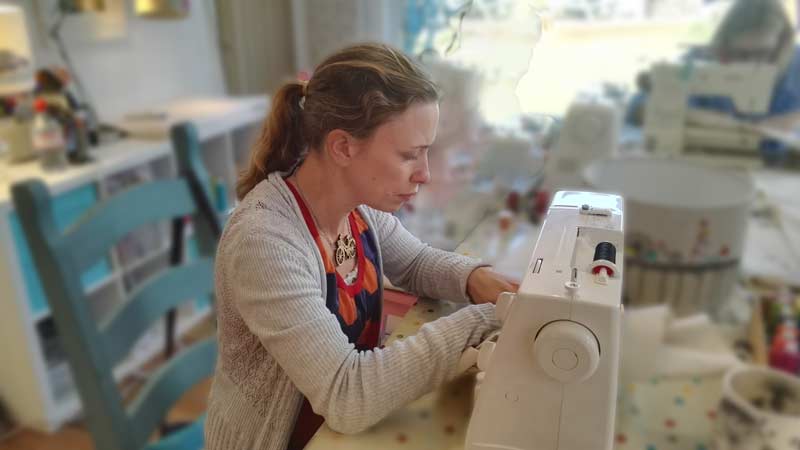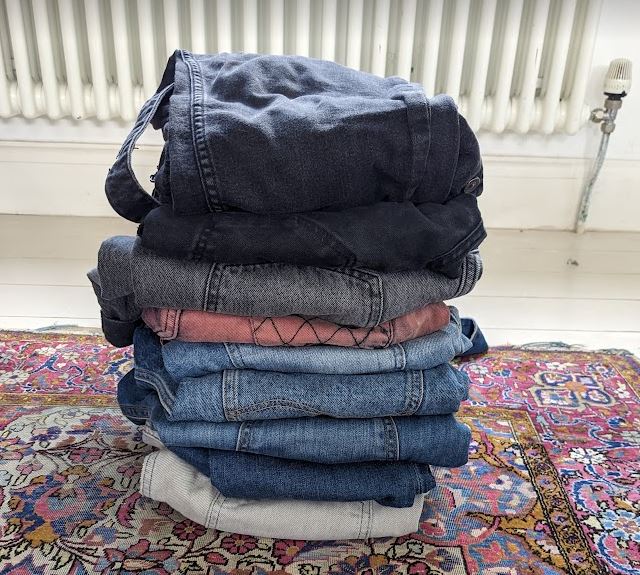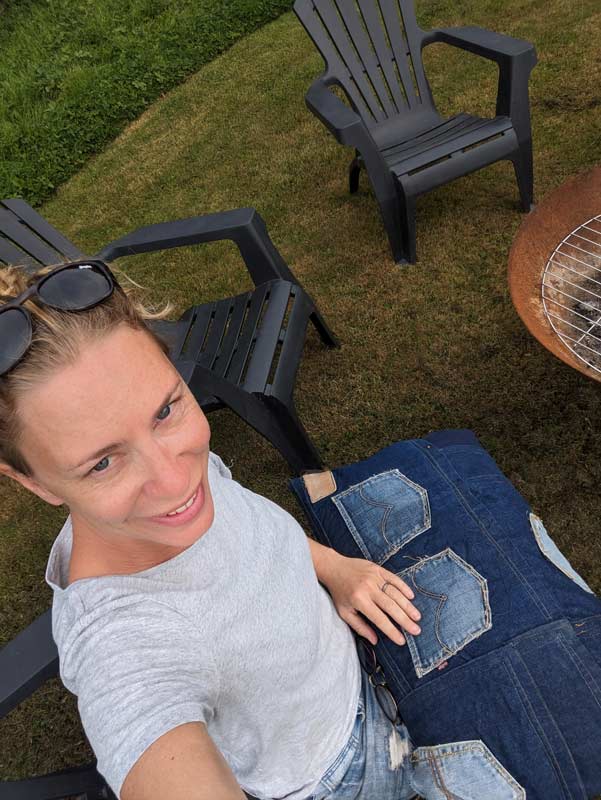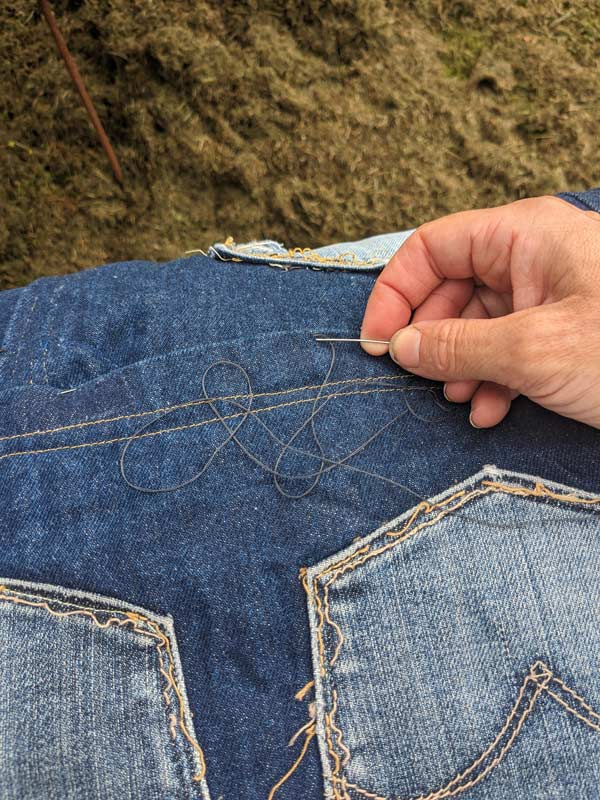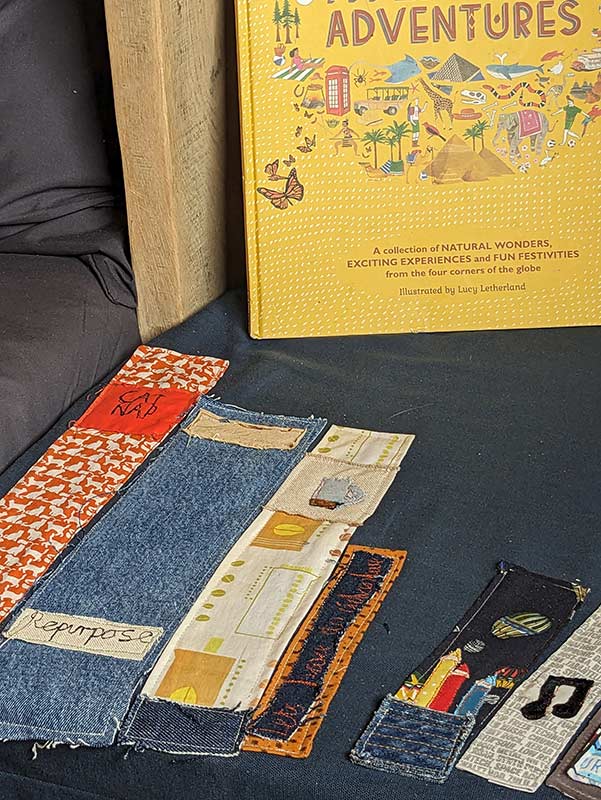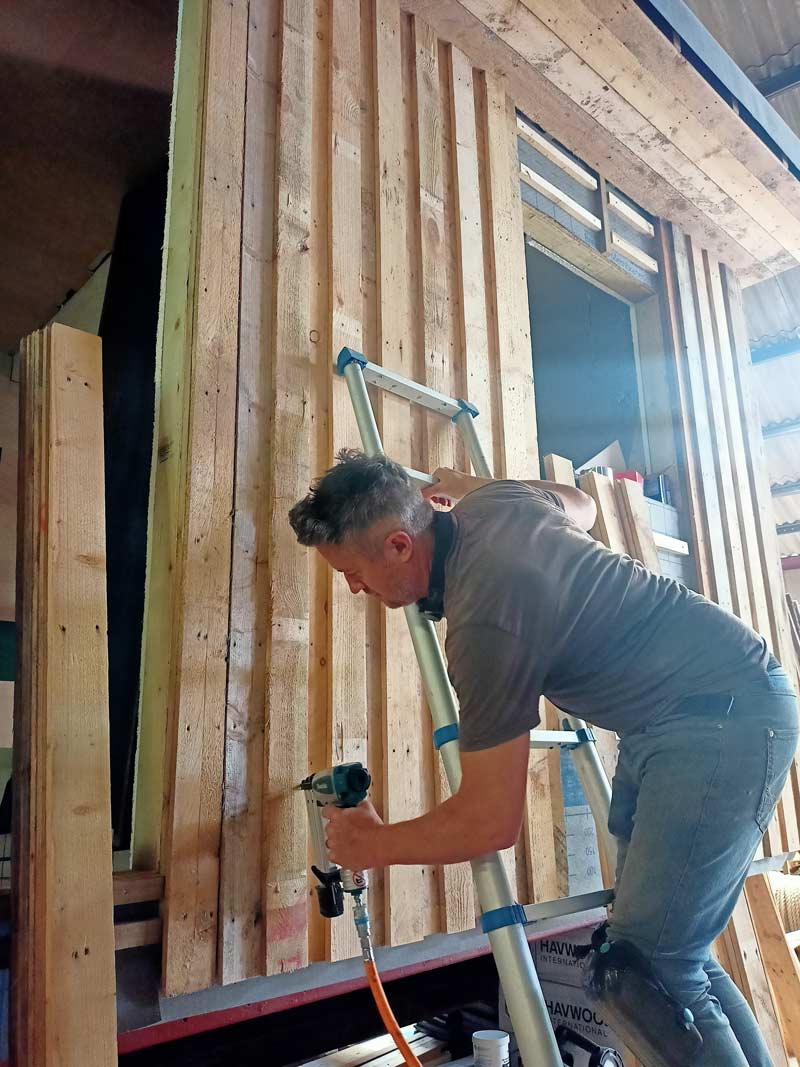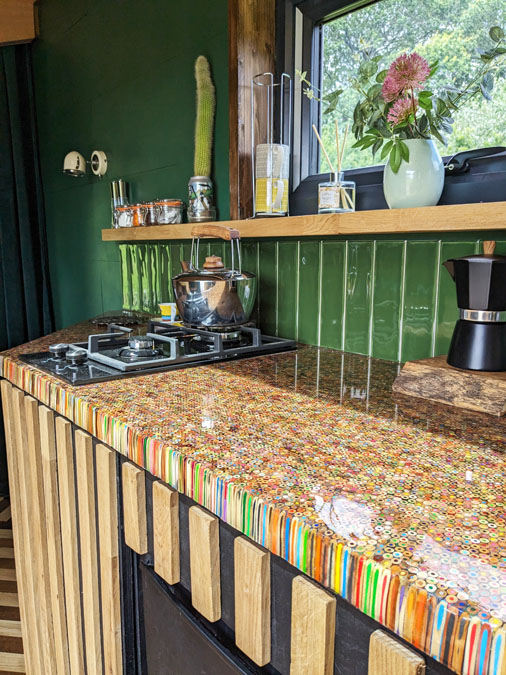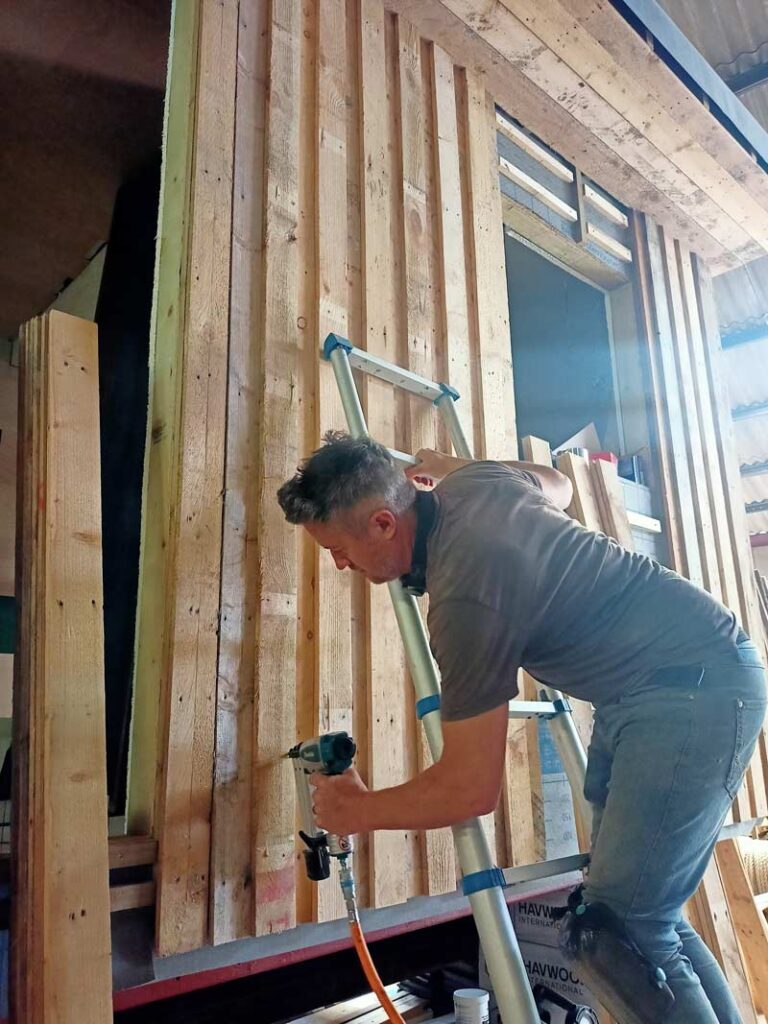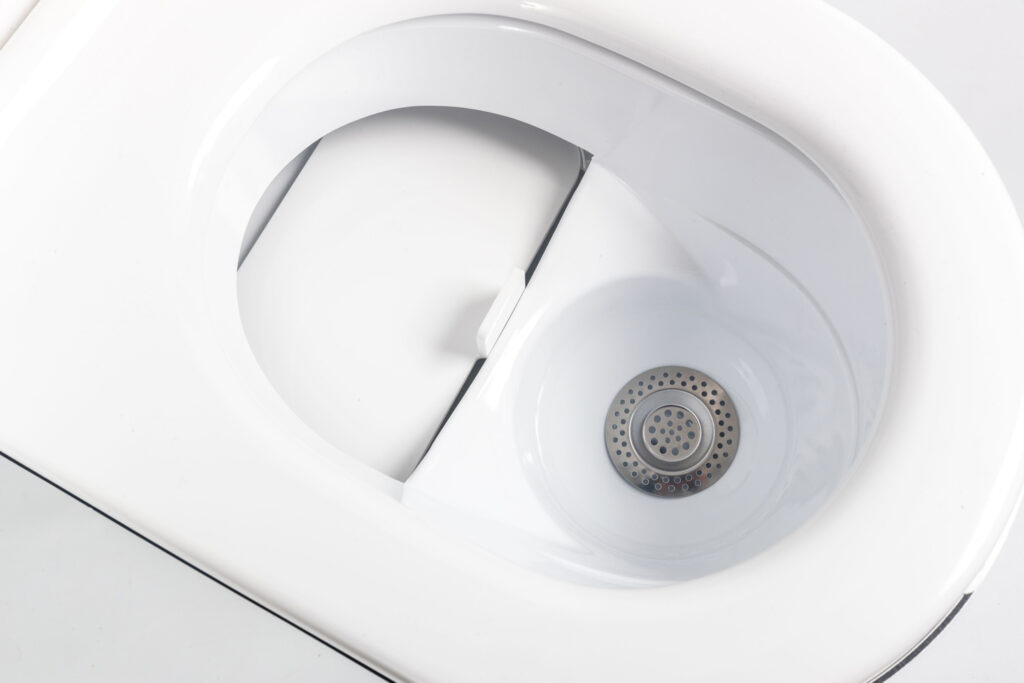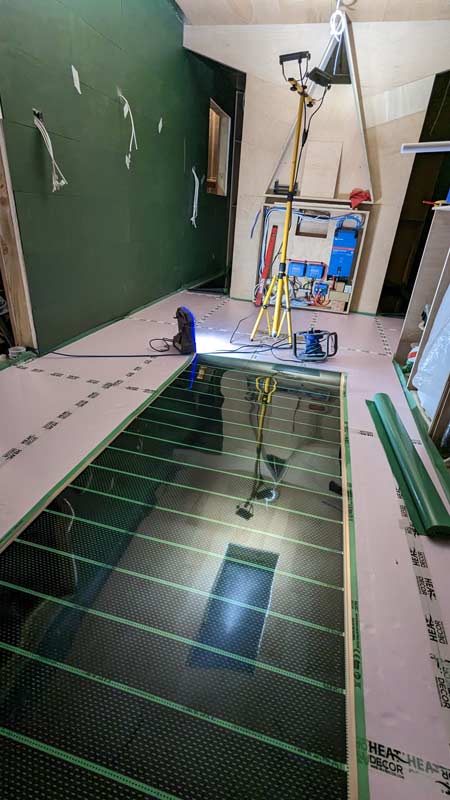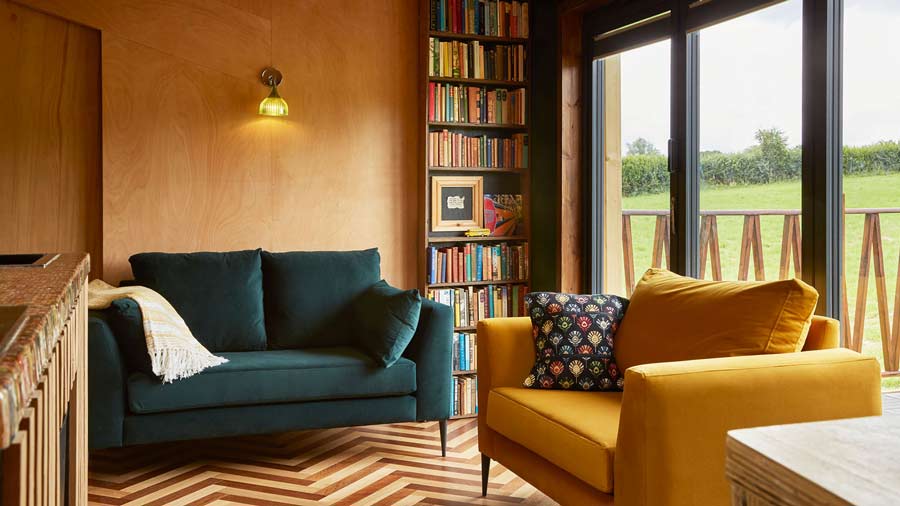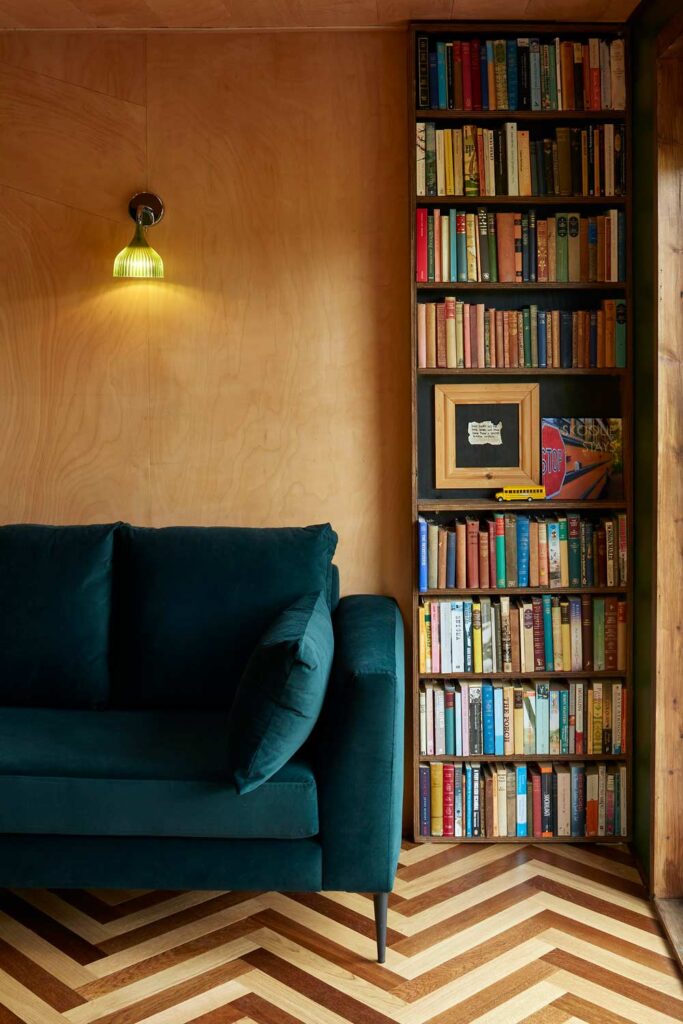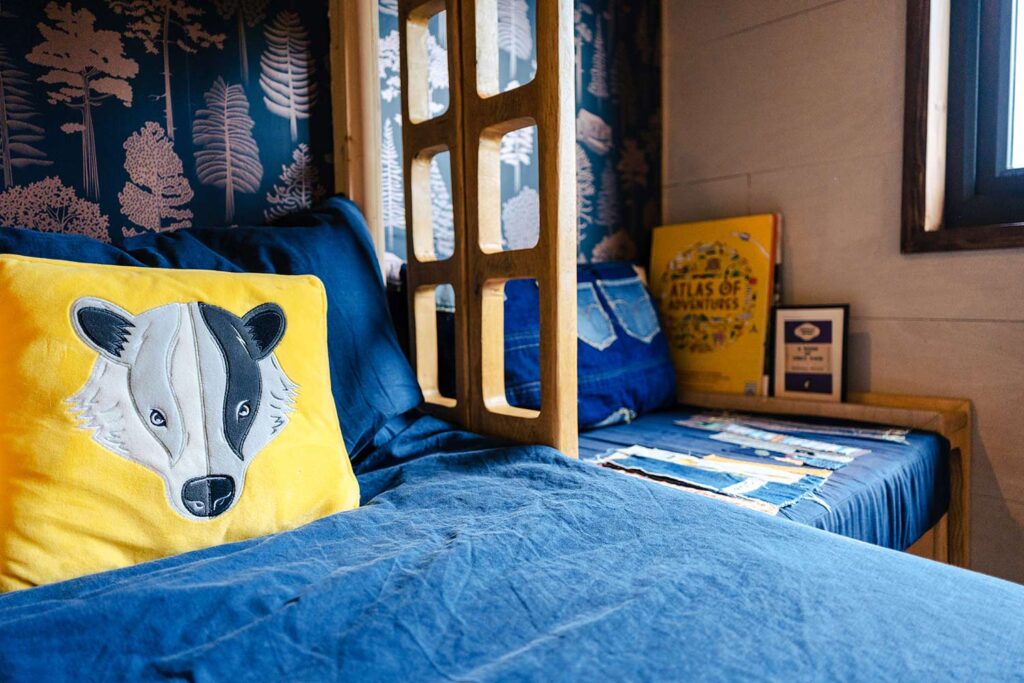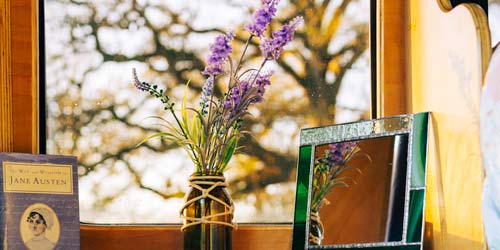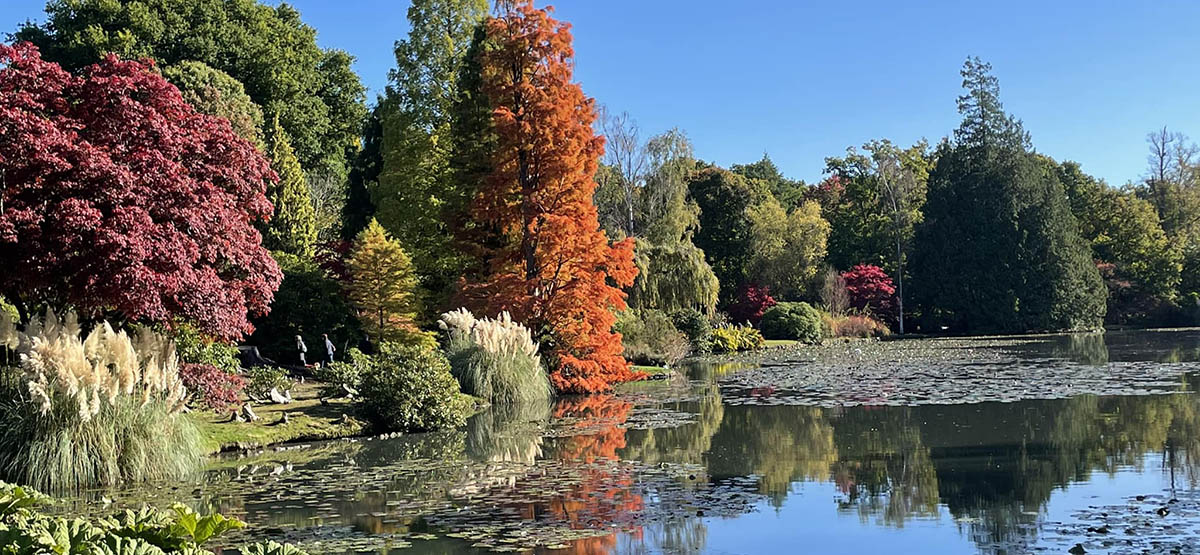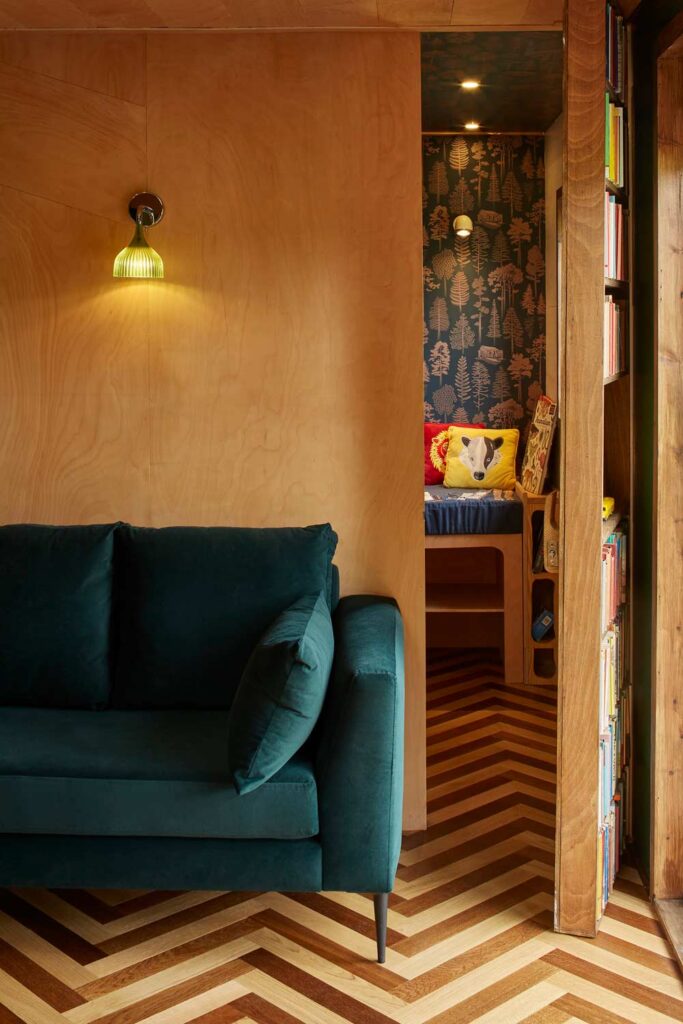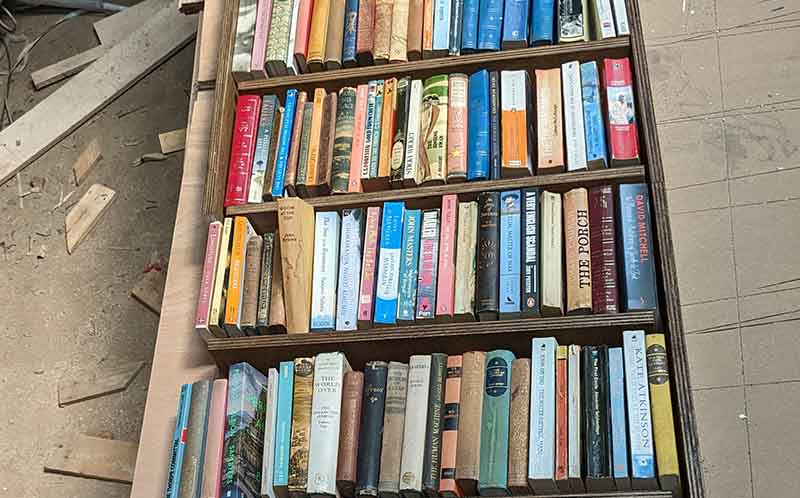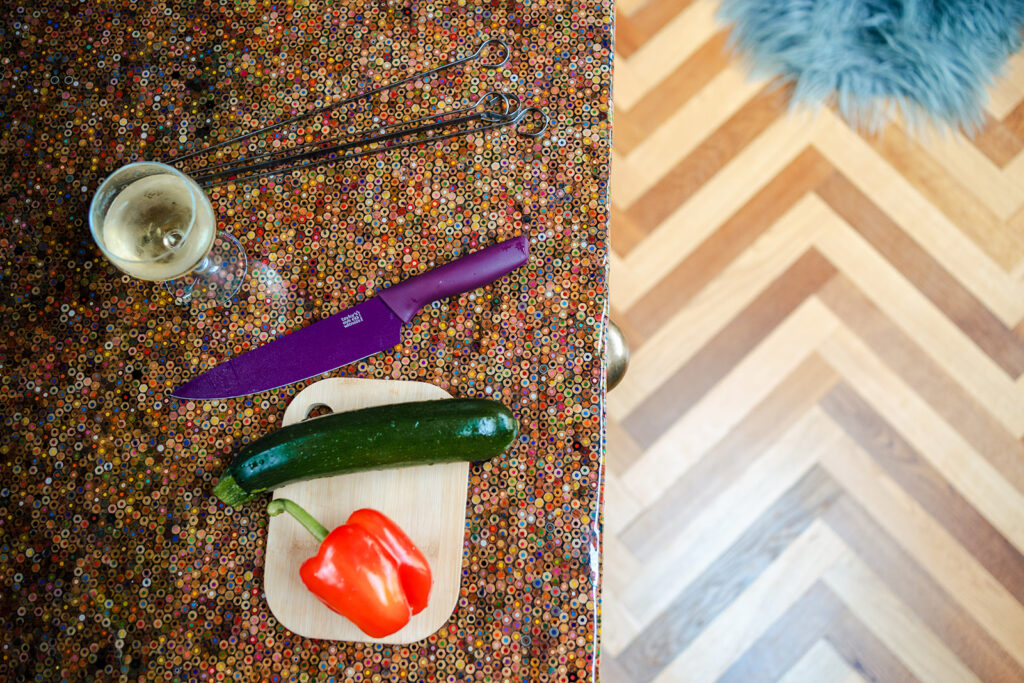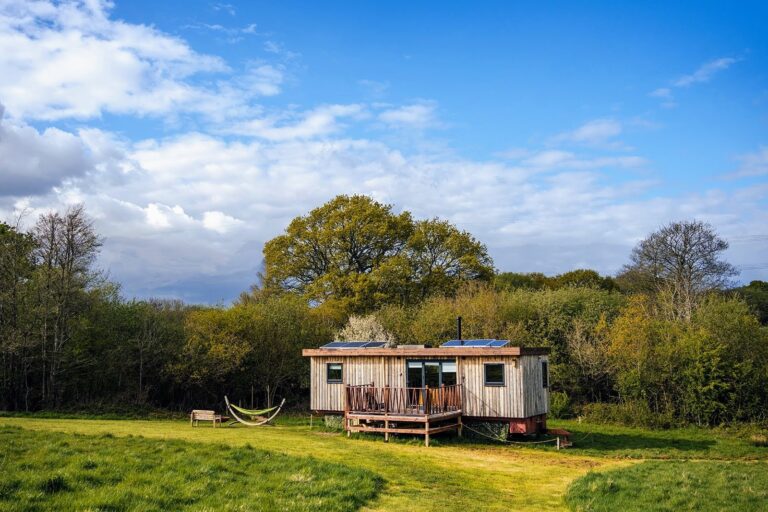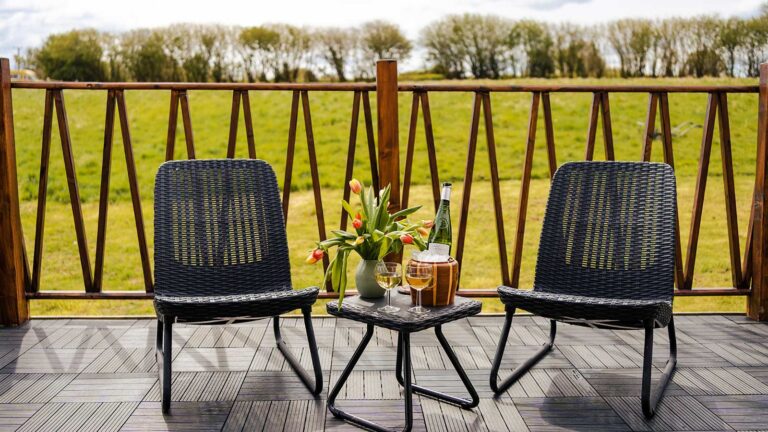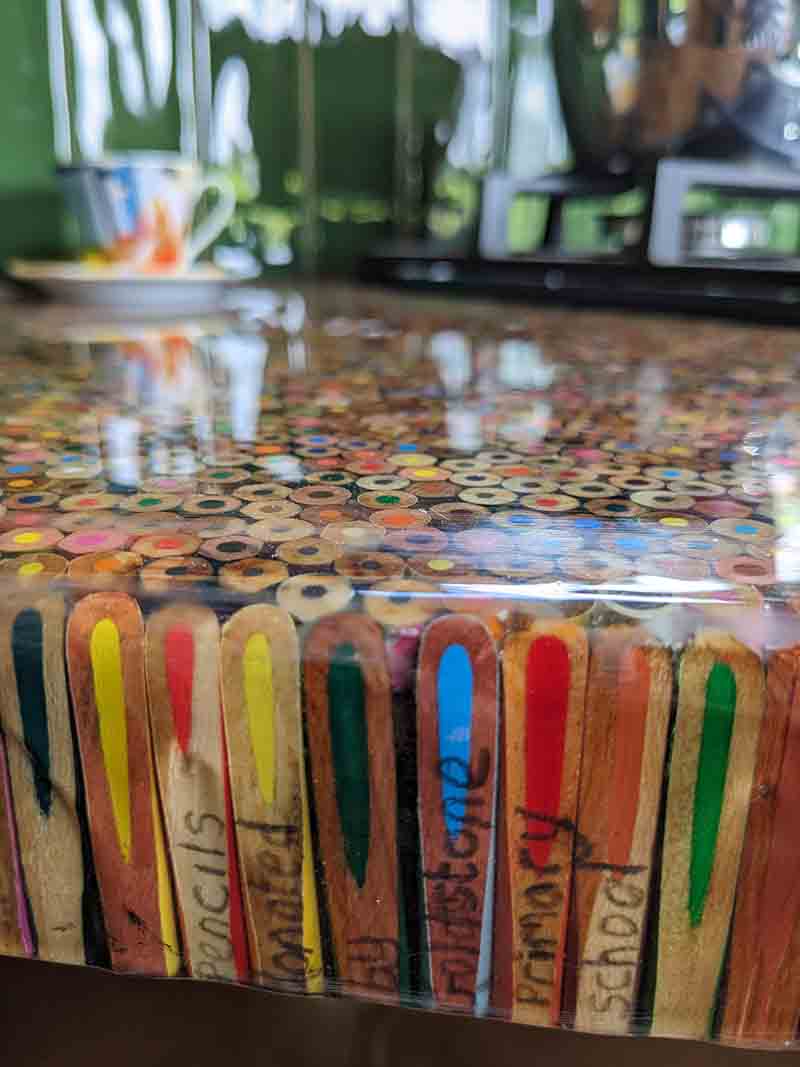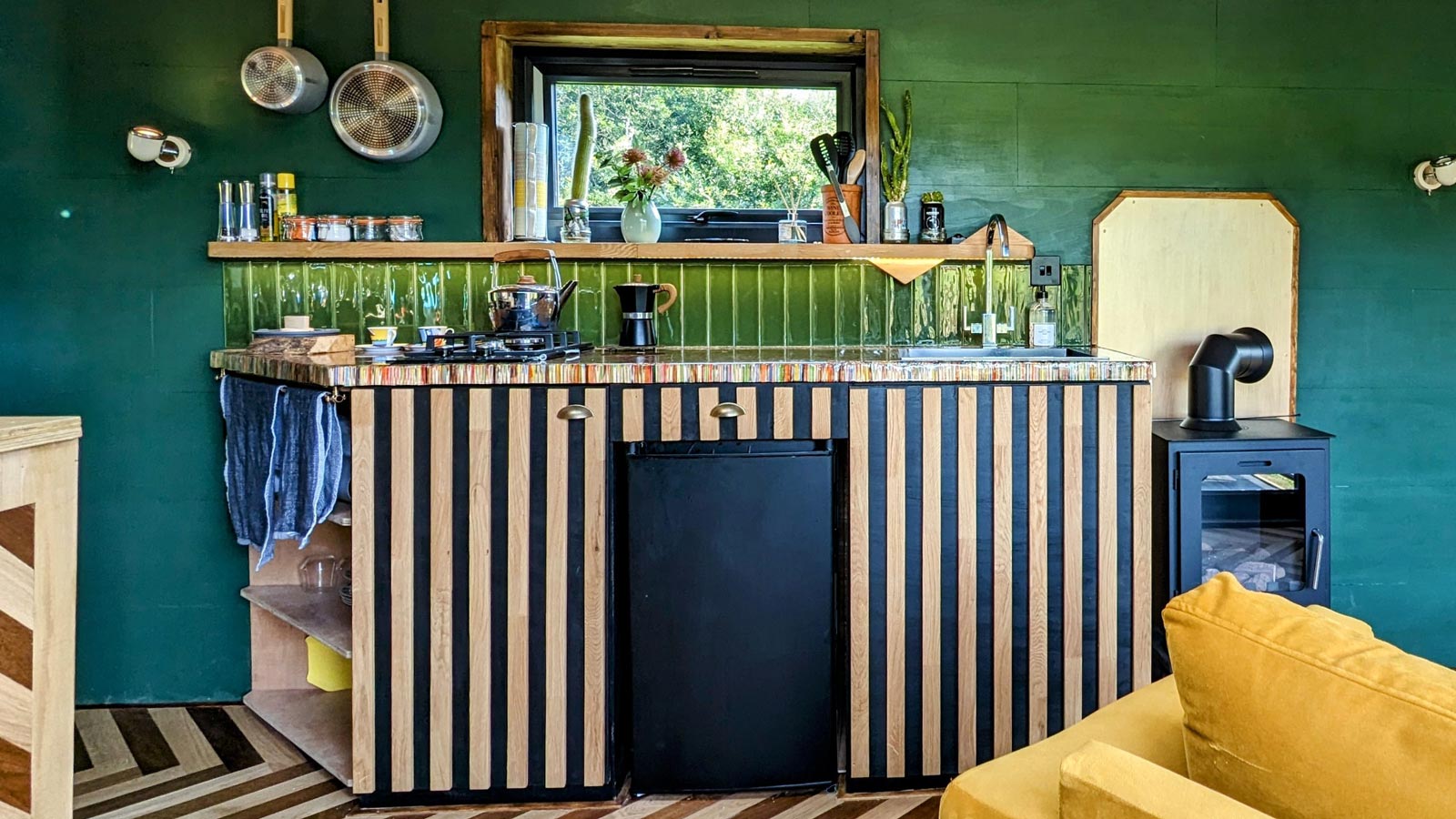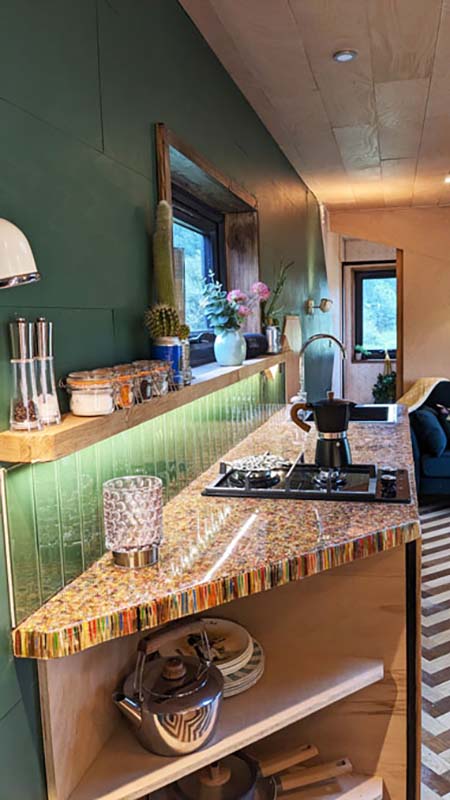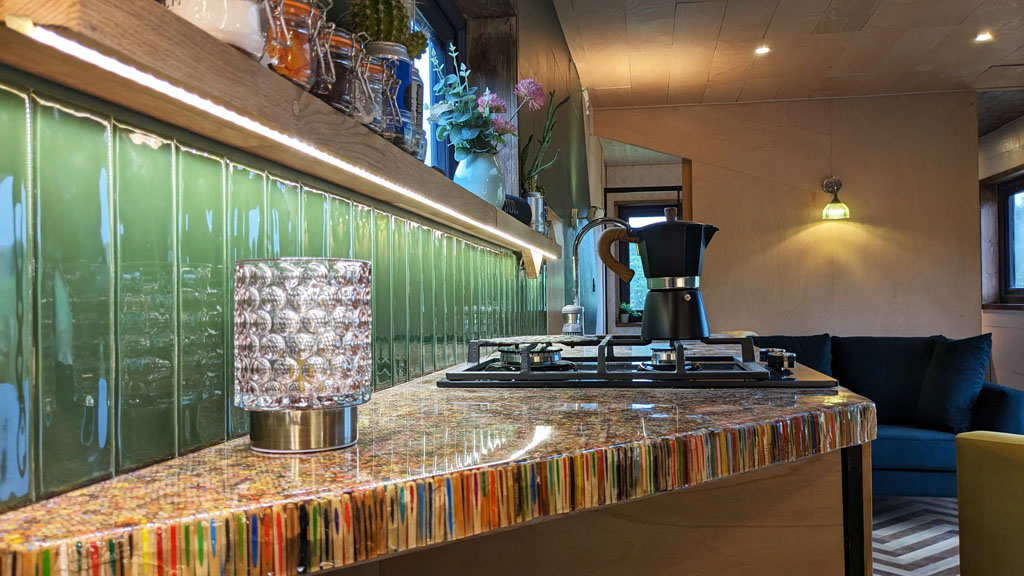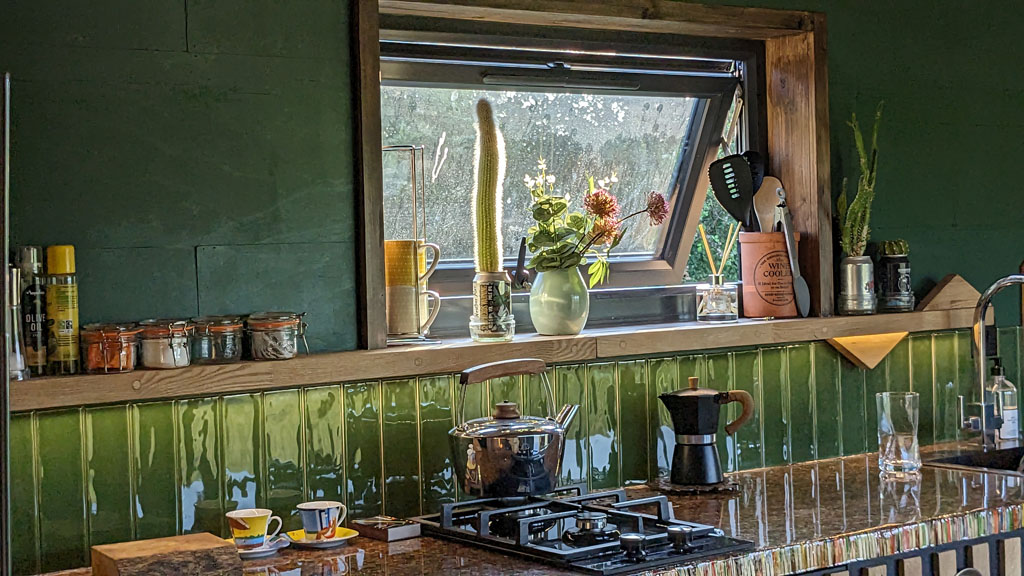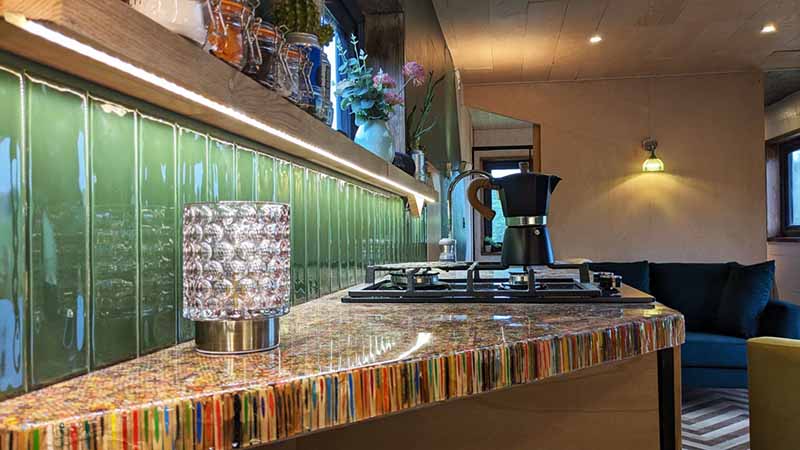If you’ve looked for a digital detox cabin in the UK recently, you’ll know the landscape is pretty crowded. A lot of the options look the same: minimalist prefab cubes, one big window, a fold-out bed, a lock box for your phone as part of the “experience,” and a heavy lean on tech workers escaping burnout.
Nothing wrong with that — it’s just become the mould. We’re pleased we offer something different.
While the digital detox trend has surged, our Sussex retreat has quietly taken a different path. The Vacationist Eco-Cabin wasn’t built to follow the “tiny detox pod” formula. It wasn’t designed as a tech company’s answer to stress. It wasn’t sketched on an investor pitch deck.
It’s a real cabin. In a real field. With real space, real firelight, real peace, and character. And that difference matters more than one might think
Why Digital Detox Cabins Are Taking Off in the UK
The average Brit now spends six-plus hours a day on screens. Between work emails, social media, parenting admin, and digital entertainment, it’s no wonder people are searching for:
- digital detox cabins
- digital detox accommodation
- screen-free holidays
- off-grid cabins near London
Most people aren’t looking for a gimmick. They’re looking for breathing room — time without notifications, noise, or the endless mental sprint of being reachable 24/7. The appetite for slow, grounded, nature-led escapes has never been higher.
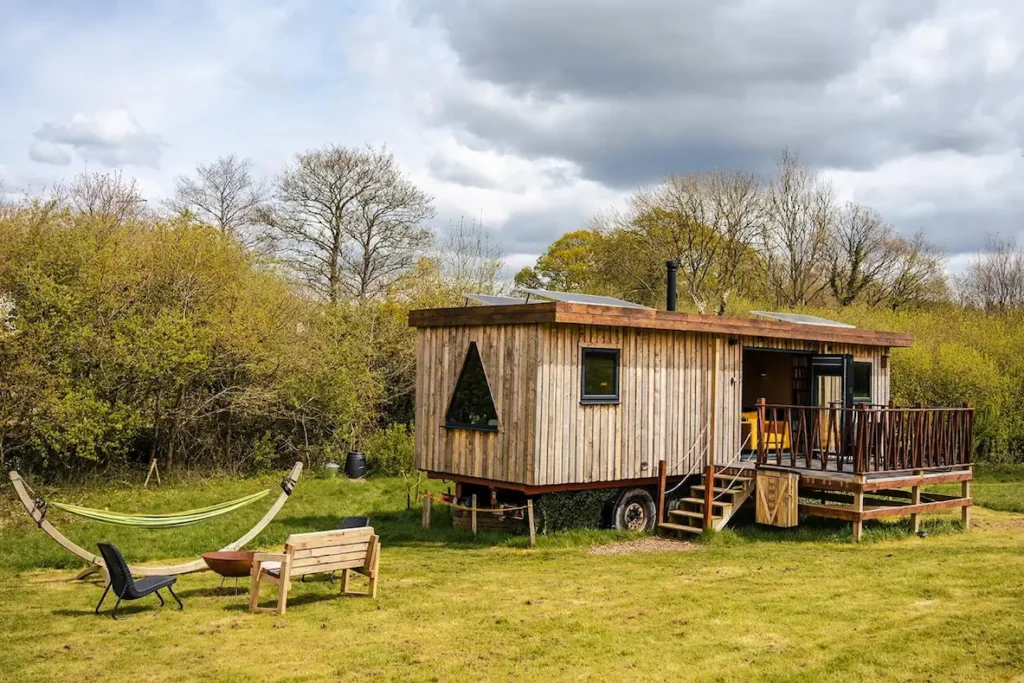
Why Some Digital Detox Cabins Get It Wrong
Plenty of digital detox cabins in the UK sound peaceful on paper, but look closer and you often get:
- tiny, boxy units
- shared sites with multiple cabins
- spaces designed more for photos as for peace and comfort
- an experience that feels curated, not natural
They’re fine for people who want a quick break from emails — but they don’t offer the deep exhale many guests truly need.
A proper digital detox isn’t just removing WiFi.
It’s designing a whole environment that makes switching off feel effortless.
How This Sussex Cabin Leads a Different (Re)Charge
The Vacationist Eco-Cabin does almost everything the opposite way — not for marketing, but because that’s how it was built from day one. Before “Digital Detox” was even a movement.
✔ A genuine log cabin
Not a prefab box. Built on a retired agricultural trailer, crafted from reclaimed wood, with personality, stunning design touches, and warmth. Not jusy plywood walls and ceilings.
✔ A large private field
Not a row of identical pods. No neighbours.
✔ A woodland hideaway
A place to sit, cook, talk and breathe among the trees — not a token “outdoor area.”
✔ A wood-fired hot tub
Not an afterthought. Our wood-fired Hot Tub is a central experience: slow evenings under the sky, quiet conversations, stargazing.
✔ Designed for couples and families
Most detox cabins are designed for two. This one gives you more rooms. What’s more, the second room which is perfect for kids, is hidden behind a secret bookcase door. Magical!
✔ Comfort first, trend second
Hotel-quality bedding. A roaring log burner. Books. Games. Sun deck. Hammock. Field. Woodland seating and cooking area. Space.
A Screen-Free Holiday in a UK Log Cabin That Actually Feels Good
A lot of “screen-free stays” market themselves around restriction — lockboxes, phone bags, rules. But real screen-free time doesn’t come from forcing yourself; it comes from feeling so at ease that you forget your phone exists. We’re very confident in saying that the Vacationist naturally does that.
You’ve got a hammock in the sun.
A hot tub waiting to be stoked.
A private meadow.
A woodland firepit.
A cosy cabin full of warmth and quiet.
It’s the kind of screen-free holiday where you end up reaching for a book, not out of duty, but because it genuinely feels better than scrolling. It’s felt by families, couples, and kids alike.
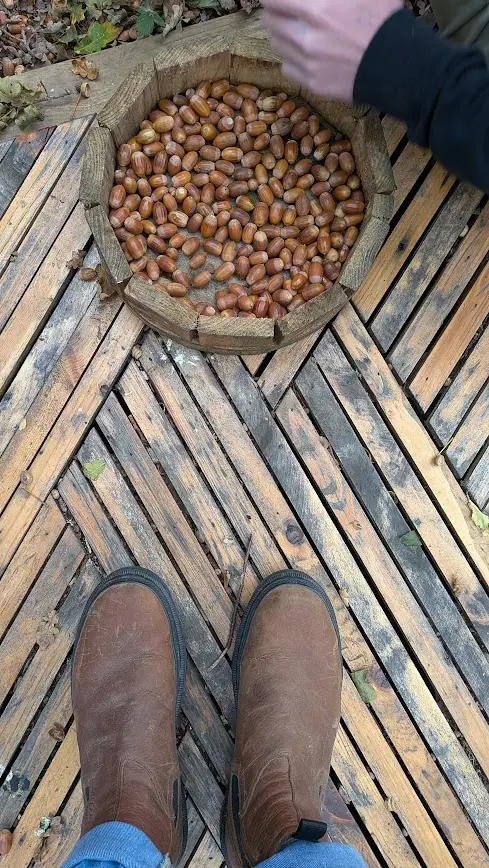
The Best Digital Detox Cabin Near London — Without Being a Tiny Pod
This isn’t deep Scotland or remote Wales. It’s just over an hour from London, but feels like a completely different world.
That’s why it works so well for:
- stressed professionals
- people craving stillness
- parents needing real downtime
- couples wanting reconnection
- anyone whose brain feels like a browser with 47 tabs open
You’re far enough from the city to breathe, but close enough that travelling doesn’t feel like work.
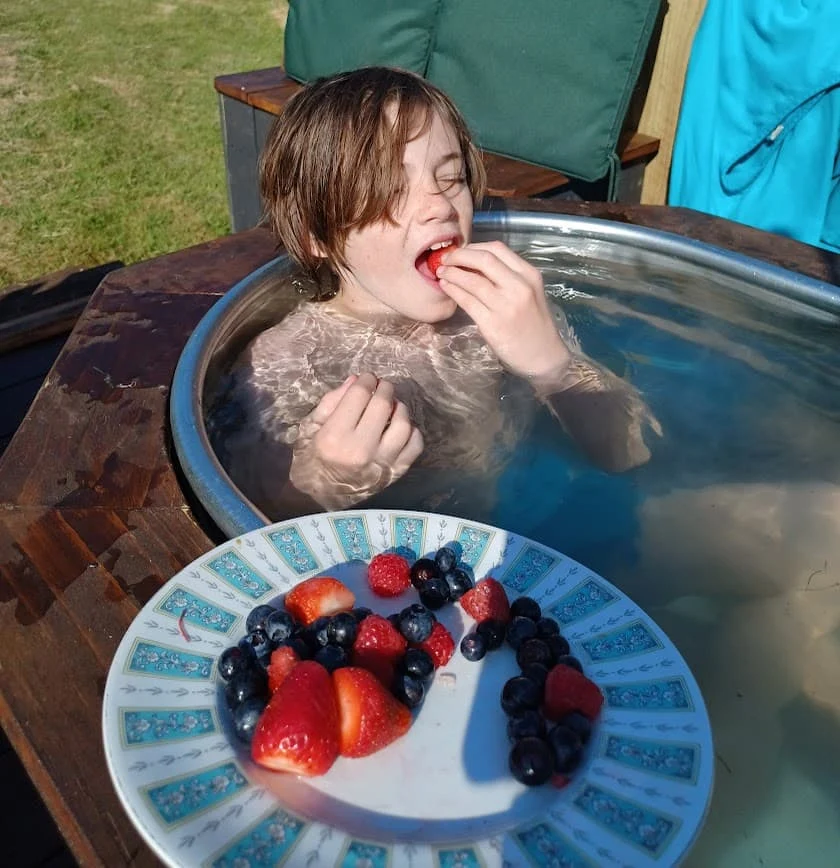
Why Guests Say This Cabin Works so well
The Vacationist wasn’t created as part of the digital detox “industry.”
It was created because we built a space we ourselves wanted — one that feels calming and comfortable without trying too hard. The ‘digital detox’ magic is a natural byproduct of the environment, not a marketing tactic. That’s why guests switch off more easily:
“Where to start….honestly one of the best glamping breaks we’ve been on, and we’ve been on a fair few! This place was just magical. Each and every eco and design detail on the cabin were noted and very much enjoyed. The space was well thought through and the little touches like tea, coffee, shampoo etc much appreciated. Beds and seating areas super comfy. Then on to the outside space – a veranda directly outside, perfect for morning coffee in the sunshine, the fire pit in the open field perfect for the last of the sunshine and the secret wooded area, perfect for sheltering from the rain – or extreme heat if you’re lucky. And the whole space just for us, pure bliss. From the point of booking, to the lead up, our stay and after, Guy was the perfect host. Thanks so much for giving our family a little taste of the slower life, we will be back for more.”
-Suzanne, June ’24 (GOOGLE REVIEW)
What You’ll Actually Do Here (Instead of Scroll)
People often think they’ll get bored without screens.
There’s little chance of that at The Vacationist.
Most guests naturally end up:
- reading on the deck
- soaking in the hot tub
- exploring woodland trails
- cooking over the fire
- falling asleep early
- noticing nature again
- talking more
- thinking more clearly
- doing nothing — and clearly loving it
You won’t miss your phone. You’ll be surprised how quickly you forget it exists. Oh, and the lovely local pubs you can walk to we very much encourage you to visit!
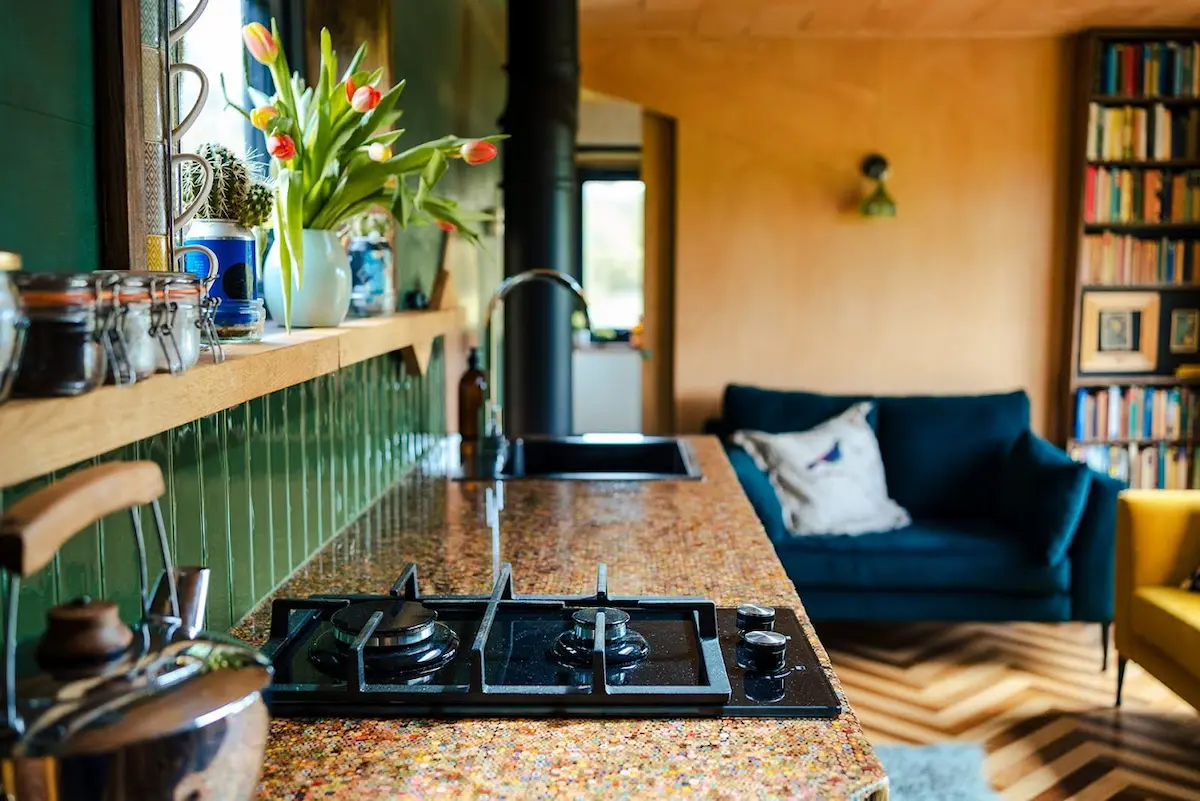
Who This Detox Stay Is Perfect For
- Couples wanting real time together
- Families wanting a kid-friendly screen break
- Solo guests needing a reset
- Creatives seeking headspace
- Over-workers needing quiet and a slow-down
- Anyone who feels stretched thin
You don’t need to be “burnt out” to benefit. You just need the change of pace that the cabin can bring to anyone.
What is a Digital Detox break?
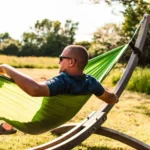
A digital detox is simply a short escape from screens and constant digital noise. This cabin is designed to help you relax naturally — with nature, firelight, comfort and calm surroundings.
Is this suitable for families as well as couples?
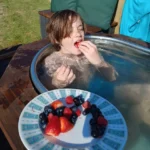
Absolutely. Families love it because the kids explore, play and enjoy nature without screens. Couples choose it for privacy, romance and quiet. Think boardgames, books, play and contemplation.
Will I get bored?
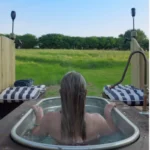
No! Quite the opposite. You (and your partner or kids) will rediscover slower ways of being and living thrpugh each moment. Conversation and games and exploration will naturally surface once the noise and distraction of less phone and screen-time recedes.
When should i plan a Digital Detox escape?
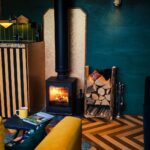
Weekends are obvious but if you can take time off in the week you will appreciate it even more and perhaps feel even more benefit. And if you can stretch to 3 days or more then your mind will thank you later. As to seasons, Autumn and Winter lend themselves to hunkering down as well as crisp country walks. Spring and Summer add hammock and late evening firepit time to the agenda a bit more. Anytime is good for a personal or family digital detox.


